What happens when you are told that the job you have been working on is put on hold? Dave Rogers went to find out
“It was pretty sombre.” Andy Swift, the man in charge of building the planned HS2 station at Euston, is recalling the mood when the team was told three months ago that the project was being mothballed for two years.
Transport secretary Mark Harper made the announcement, via a written statement, one afternoon in early March. “We didn’t think it was going to happen,” Swift adds.
He wasn’t the only one. Lots of effort had already gone into getting the site ready for work to begin in earnest this April and May. It seemed unthinkable to stop the job dead in its tracks when pretty much everyone agreed that a delay would not save any money – merely delay spending it.
Since the decision was made, the industry‚Äôs mood has probably been summed up best by the chair of the National Infrastructure Commission, Sir John Armitt, who told ∫√…´œ»…˙TV the day after Harper‚Äôs bombshell: ‚ÄúJust get on and build the thing.‚Äù
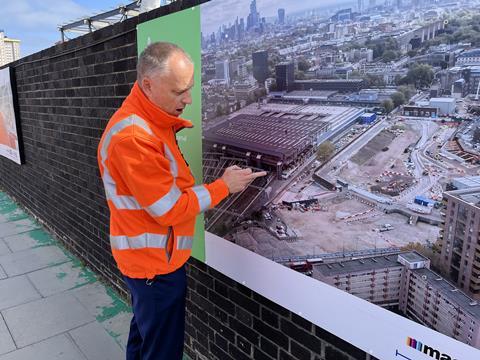
A West Ham United fan, Swift‚Äôs mood has improved since and, on the morning he speaks to ∫√…´œ»…˙TV, it has been buoyed further by his team‚Äôs win in the Europa Conference League final in Prague the previous night. ‚ÄúI listened to the game on the radio. I was on the edge of my seat.‚Äù Harper‚Äôs announcement ‚Äì it eventually came out late in the day after hours of rumour ‚Äì will have no doubt stood him in good stead.
Staying upbeat is important, Swift says. “I’ve got a team of 200 I need to keep motivated. We’ve still got work to do.
“I can’t afford to be down in the dumps about it,” he adds. “That’s the message to the team. We’re not shutting up shop, shutting the gates and saying ‘see you in two years’.”
As far as he is concerned the team is planning to restart the job in earnest in April 2025, when the hiatus is lifted.
But being positive cannot hide the fact that the job has been pared back significantly. Utility work involving a water main diversion has stopped, as has piling work. German firm Bauer was set to start at the northern end of the site with the piling rigs eventually making their way south towards the Euston Road. And plans to put a piled wall in where platform 16 of the mainline Euston station is have also been put on ice. It is an awfully big site in the middle of London to stand derelict for too long.
The brain drain from Euston

It is the number of people, though, that have now left the job which puts the real-life impact of Harper’s decision into focus.
A design team, comprising WSP, Arup and Grimshaw, has pretty much vanished, whittled down from around 500 to just half a dozen; the Mace Dragados joint venture, the team appointed as main contractor on the job in 2019, has lost around 60% of its management, with 150 of an original number of 320 now left; and a labour force of 450 will be gradually shrunk to 200 in the coming weeks and months.
Swift, HS2’s project director for the 65,000m2 site, says at peak Euston will have a workforce of between 2,500 and 3,000 people on it. This was supposed to have been in 2025 and 2026.
There will be 20 tower cranes on the job. Old Oak Common, the station being built in west London where HS2 trains will now call at first, will have eight tower cranes.
Swift says some of the Mace Dragados team have been redeployed to Curzon Street, the station being built in Birmingham, while WSP has relocated some staff to Old Oak Common. But losing around 1,000 people from a scheme has consequences.
Mace has sent some HS2 staff to Canada to bolster its growing business there, which, ironically, includes revamping rail networks in Ontario – a case, it seems, of skills learnt on HS2 being exported to another country.
Spanish firm Dragados has been especially hit. It was bidding the Lower Thames Crossing contract but that, too, was deferred by Harper. Quite a few of its team have gone back home – the firm is headquartered in Madrid – while Grimshaw has admitted that some of its staff have lost their jobs as a result. It won’t put a number on the figure but the rumour is around 100 people.
Swift admits that the accumulated knowledge of the past four years is in danger of simply melting away, a project brain drain in other words.
“People might say, ‘it’s been shut down once, it might get shut down again’ and they don’t come back. You’ve always got that risk and that is the danger when you close a project down. You lose that knowledge and that is why we’re trying to keep people at Curzon Street with the opportunity of bringing them back.

“The problem is regaining the momentum. You lose the momentum you have built up over time. You can’t start these jobs from a standing start.”
To illustrate this, Swift says that before HS2 he was working on the upgrade of Bank station on the London Underground. “When covid hit, we shut the project down in 24 hours. It took us three months to restart it.”
He adds: “Putting piles in [at a site like Euston] is the easy bit. It’s how you get the materials in and out of site, how you move stuff around. You can’t get a piling rig the next day – this all has to be booked in. Everything has to be planned and that takes time.”
But, despite everything, Swift says: “Euston is going to get built. HS2 doesn’t work without Euston.”
These projects run at a really fast pace when they get going. We’ve got a bit of time to take stock of a few things. How can we do things more efficiently? On a project of this size, you never get an opportunity to pause and take a breath
Andy Swift, Euston Project Client Director, HS2
There is no danger, he adds, that those in charge of the purse strings will adopt a make-do-and-mend approach – and instead place all their bets on Old Oak Common and bin Euston. “You can only run trains to Manchester with Euston.”
After Harper’s blow, Swift says the team went through a mourning period. “We’ve all been through the grief curve, we’ve had a bit of time to get our heads around it all now.”
Swift has adopted a pragmatic approach. “The decision was out of our control. This is the task at hand and we’ve got to deal with it.”
He says: “These projects run at a really fast pace when they get going. We’ve got a bit of time to take stock of a few things. How can we do things more efficiently? On a project of this size, you never get an opportunity to pause and take a breath.”
The team will go over its processes and look at efficiencies. “There is a big focus on our error reduction strategy and our get-it-right initiative. We’ve been afforded a great opportunity and we’ve got to make use of the time we’ve got. We’ve got time to look at new tech and innovation and the use of things like AI in project planning.”
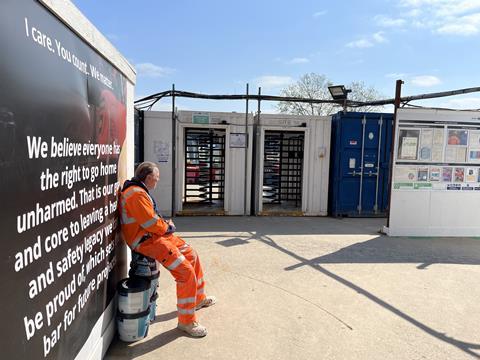
Harper’s statement, in a nutshell, said that Euston was costing too much and costs needed to be brought down. “We haven’t been given a target of what to get it to,” Swift adds.
The cost is currently £4.8bn, nearly double the £2.6bn figure it was given in 2019. The obvious question, then, is how to cut costs to something those in the Treasury will be prepared to sign off? Efficiency savings cannot solve everything.
Options are being discussed and among these are cutting the number of platforms down from 10 to seven and adding the extra three when the eastern leg of the route is up and running. Another version of this theme is to build 10 platforms but only fit-out seven of them.
There are no plans to reprocure the main contractor role, he says, and asked if the WSP, Arup and Grimshaw team will be retained, he adds: “They’ve been with us a long time.”
In fact, the handful of staff left from the design team are working on feasibility studies for the station design. Swift says the pause will also help the design work on the neighbouring Euston mainline station catch up with HS2.
“We were quite far ahead and the stop means everyone becomes more aligned, which should make construction simpler.” Still, there will be those wondering what sort of redesign might emerge when just six of an original 500-strong team are left.
Ongoing work
In the meantime, work does continue at the site. A substation that will power the Northern line below it will be completed. The current one sits where the HS2 station will go. A site welfare facility is being completed and, in fact, what is left of the project team will move in once it has done so. And a construction skills centre, which HS2 hopes will provide a conveyor belt of skilled trades to work on the project, is due to be wrapped up at the end of the year.
Tunnel boring machines, due to run from Old Oak Common to Euston and currently being made in Germany, will continue to be manufactured, with Swift suggesting that tunnelling might only be delayed for six months as this was not due to start until the end of next year.
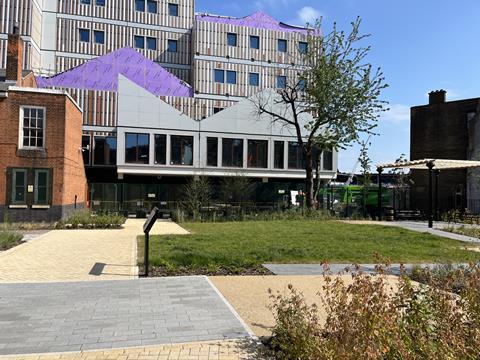
But the procurement of those 20 tower cranes has stopped, pipework for the water work is being stored on site as will be plunge columns for the piling, along with valves and gas steel pipes. Materials that have been specially made cannot be sent back and so are being kept on site where HS2 can keep an eye on them.
“Anything off-the-shelf, we’ve sent it back and got our money back,” Swift says. Good news for the taxpayer, no doubt, less so for those firms having to deal with lost income. There will be no compensation for lost contractor profits, either.
>>Also read: Should the scope of HS2 be cut to save money?
>> ‘Just get on and build the thing.’ John Armitt goes in to bat for HS2
Still, there is enough work for the team still there to do. “We’re not going to run out,” Swift says.
This includes turning a Victorian school at the eastern edge of the site into more welfare space for the construction team while it is also beginning a series of so-called “meanwhile use” initiatives after consultations with Camden council, the local authority, and nearby residents.
These include adding green space and planters, pushing back hoardings and reopening some of the roads that run through the site which had previously been blocked off.
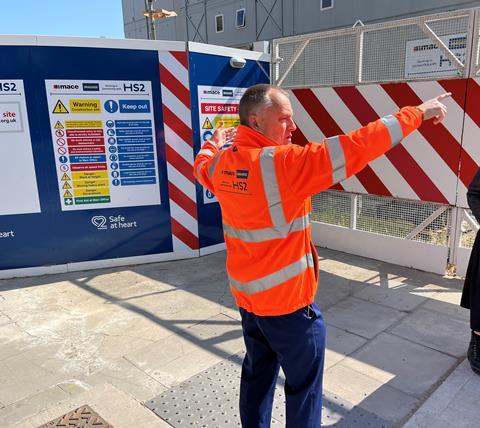
There is talk that a temporary taxi rank at the front of the station will be turned into market stalls and there will be space for a company that turns abandoned and rusting bicycles into something rideable again.
Swift, whose previous employers have include Bechtel and Mace, and who started out as an 18-year-old apprentice on reconstruction work at Angel station in north London, says that despite the trauma of the past few months he is sticking with Euston. “I kind of made a choice to come to Euston and I’m not going to walk away,” he says.
HS2 Euston in numbers
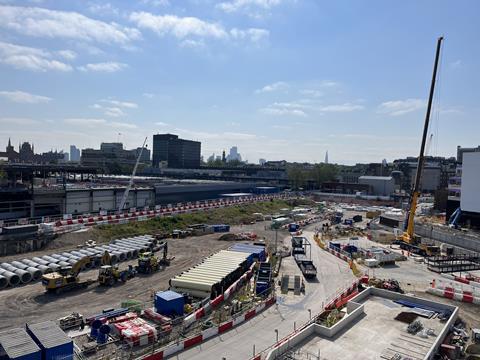
- Around 1,000 people have been demobilised following transport secretary Mark Harper’s decision to pause work at the site in March
- A design team of 500 has been shrunk to around 6
- The Mace Dragados joint venture has seen its number of staff drop from 320 to 150
- The number of people on site will fall from 450 to 200 in the coming weeks and months
- At peak, Euston will have 2,500 and 3,000 people on site along with 20 tower cranes


























No comments yet